An interview with Craig Hanson and Moray McLeish of the World Resources Institute. Jeremy conducted the interview; Rhett wrote the introduction, laid out the page, and developed the images.
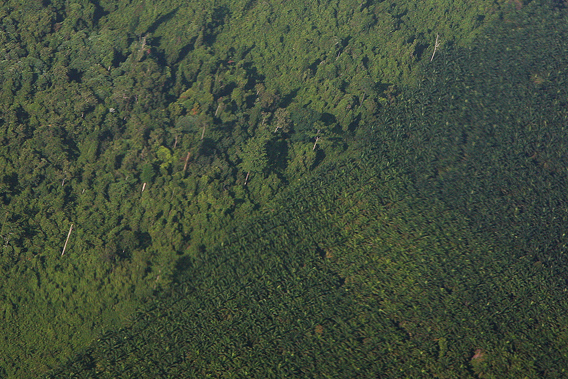
Oil palm and logged over rainforest in Sabah, Malaysia. Photo by Rhett A. Butler 2008.
In efforts to save the world’s remaining rainforests great hopes have been pinned on “degraded lands” — deforested lands that are presently sitting idle in tropical countries. Optimists say shifting agriculture to such lands will help humanity produce enough food to meet growing demand without sacrificing forests and biodiversity and exacerbating social conflict. But to date, degraded lands remain an enigma, especially in Indonesia, where deforestation continues at a rapid pace. Degraded lands are often misclassified by various Indonesian ministries—land in a far-off province may be listed as “wasteland” by Jakarta, but in reality is blanked by verdant forest that sequesters carbon, houses wildlife, and affords communities with food, water, and other essentials. Granting logging and plantation concessions on these lands can result in conflict and environmental degradation.
Therefore key to unlocking the potential of non-forest land, and thus setting Indonesia on a low carbon development pathway, is determining where degraded lands actually exist. But the process goes beyond mere land cover mapping. Decision-makers must have the full picture of the land: its ownership and use, its state of degradation and suitability for agriculture, and an understanding of the actions needed to restore it to productivity.
Under the billion dollar Indonesia-Norway partnership to reduce deforestation, some money has been allocated for degraded lands mapping. But even before the pact was signed this past May, the World Resources Institute (WRI) had launched a project to identify degraded lands in the country. Working with local partners, WRI is focusing on ways to address one of Indonesia’s most important drivers of deforestation: palm oil production.
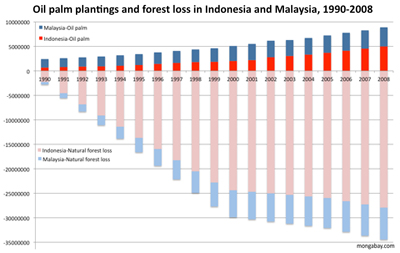 Expansion of the oil palm estate and natural forest loss in Indonesia and Malaysia, 1990-2008. Click image to enlarge |
Over the past twenty years, palm oil has emerged as a economic juggernaut in Indonesia and Malaysia. With its high yield, oil palm is an astoundingly profitable crop and accordingly, plantations have spread across Sumatra, Borneo, New Guinea, and other islands, taking a heavy toll on forests. By some estimates, more than half of oil palm expansion since 1990 occurred at the expense of forests. In the absence of action, the trend is expected to continue, driven by rising demand for vegetable oil.
WRI is interested in ensuring that future growth doesn’t lay waste to remaining forests. Therefore its mapping project aims to identify sites for “land swaps” whereby concessions on forest land could be shifted to deforested grasslands. The initiative also provides guidelines to plantation companies for obtaining the free, prior, and informed consent of communities living near the degraded area and achieving Roundtable on Sustainable Palm Oil (RSPO) certification.
In a December 2010 interview with mongabay.com, WRI’s Craig Hanson and Moray McLeish discussed how the initiative could turn palm oil companies from drivers of deforestation into forest protectors.
An interview with Craig Hanson and Moray McLeish
What are your backgrounds?
 Craig Hanson (left) and Moray McLeish (right). |
Craig Hanson is the Director of the People & Ecosystems Program at the World Resources Institute. Prior to joining WRI, Craig was a project manager at an international management consulting firm.
Moray McLeish is the manager of Project POTICO at the World Resources Institute. POTICO (Palm oil, Timber, Carbon Offsets) convenes and leads a number of partners to implement land swaps that divert planned oil palm plantations on degraded lands and bring the forests that are slated for conversion into sustainable management. Prior to joining WRI, Moray worked on forest conservation in Indonesia with the IFC and The Nature Conservancy.
DEGRADED LANDS
What is the definition of degraded land?
“Degraded land” refers to areas that were cleared of their natural vegetation cover, now contain low levels of biodiversity and low stocks of carbon, and are not used for productive agriculture or human habitation. Alang-alang grasslands (Imperata cylindrica) are an example of such degraded lands in Indonesia.
Note that what we are talking about is not strictly degraded “land.” The areas do not necessarily have poor soil quality. Rather, what we are referring to is degraded “land cover.” The area’s ecosystem is degraded relative to what was there before—in the case of Indonesia, tropical rain forest.
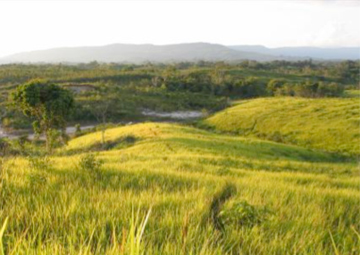 A tract of degraded land, with alang alang, in West Kalimantan, Indonesia. Photo: Sekala/WRI |
Definitions fit within a context. Since the context in which we are working—breaking the link between oil palm development and greenhouse gas emissions—involves policies and actions designed to reduce greenhouse gas emissions, the definition of “degraded land” given above is taken from a “forest carbon” perspective.
Definitions are important. The recent interaction between Greenpeace and the Government of Indonesia over “loose definitions” of land conditions, what lands may or may not be developed into plantations, and related matters highlights this importance.
Could secondary forests, which may have biodiversity or climate potential, be considered degraded land?
Many secondary forests (or degraded forests) certainly do have biodiversity and climate (carbon storage) potential. It is critical that these forests are identified and prioritized for rehabilitation. But other secondary forests may be so badly cleared that restoration is not economically feasible or practically realistic. This is why clear and pragmatic definitions of “degraded” are so important—to help stakeholders plan what to do with what land and where to focus efforts to maximize benefits to local people, biodiversity, the economy, and the climate.
FOOD OR FOREST?
Should degraded lands be restored to forests or converted to agriculture?
Decisions about degraded land use should be determined by individual countries in careful consultation with the communities living near them. The decisions should respect existing land rights, including customary use rights. Factors to consider when making choices about different land uses include: To what degree is agricultural expansion a direct driver of deforestation? What is the level of food security in the region or country? What is the relative ease, biophysically and economically, of restoring the land to either forest or farms? Is the area of degraded land in question adjacent to a waterway where erosion is a problem? What is the country’s forest conservation and REDD+ aspirations? In short, these considerations are about what ecosystem services are desired from these landscapes.
 Palm oil is now found in up to half of packaged processed foods in some markets. By virtue of its high yield, palm oil is a cheaper substitute than other vegetable oils. In an effort to reduce costs, some candymakers are using palm oil in place of cocoa butter in their milk chocolate products. Photo by Rhett A. Butler |
How these and other questions are answered should guide decisions regarding the optimal use of a particular degraded area. For example, if agricultural expansion into natural forests is the number one driver of deforestation in country X and the country has committed to curbing deforestation, then utilizing already cleared and degraded areas as a “pressure-relief valve” for agricultural expansion may make sense. However, if agricultural expansion into forests is not a driver of deforestation in country X but another issue, say erosion, is a big concern, then restoring degraded areas back to their natural ecosystem (e.g., forests) may make the most sense.
And finally, we shouldn’t forget that it isn’t necessarily “either/or”. Some tracts could be restored to agro-forestry landscapes.
Since degraded land at one time was usually forest, shouldn’t some degraded land be reforested for biodiversity and climate?
Yes, certainly. This relates to our earlier point of needing to manage land to provide a bundle of ecosystem services—freshwater, erosion control, climate regulation, food, recreation and cultural values, etc. As a result, some degraded areas should be restored back into forests or whatever natural ecosystem the landscape was before it was degraded, especially where these areas provide valuable ecosystem services such as freshwater.
Potentially how much degraded land worldwide could be restored to forests?
A recent analysis by the World Resources Institute (WRI) and partners suggests that there are more than one billion degraded hectares globally—an area larger than Brazil—that offer forest landscape restoration opportunities. These lands could be restored to their native forest state, creating habitat for wildlife, reducing erosion, ensuring clean water supplies, and combating climate change by absorbing carbon dioxide, or restored into mosaic, agro-forest ecosystems.
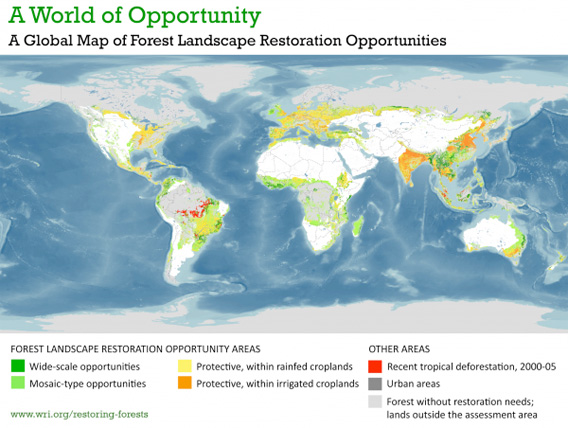
Click map to enlarge
Some of these lands could be cultivated, as well. But exactly how much could and should be turned into cultivation requires a more detailed country-by-country analysis that includes asking “cultivation for what?” We have not conducted that assessment. This should be a participatory process. Furthermore, one should note that WRI’s analysis only looked at degraded forests; we did not look at degraded grasslands, wetlands, or other ecosystems.
How does one identify degraded lands that could be amenable for agriculture, such as palm oil?
While the specifics will differ by crop, by region, etc., most methods would need to screen for biophysical suitability, economic viability, social acceptability, and legal availability of the land.
Along with partners, WRI has developed a methodology for identifying degraded lands, determining which of these are economically viable and socially acceptable for sustainable oil palm, and assessing their legal availability for plantation development. Figure 1 summarizes the key screens used in this methodology:
- Environmental. The area is degraded from a forest carbon perspective (e.g., <40 tons of carbon per hectare). Developing the area will not result in significant greenhouse gas emissions or reduce critical environmental “high conservation values” including biodiversity preservation and clean water supply;
- Economic. The area is biophysically capable of profitable oil palm production in terms of climate, topography, and soil properties. Highest priority areas meet minimum plantation size and proximity to infrastructure requirements;
- Social. Local people are likely to benefit from plantation establishment and agree to participate in a free prior and informed consent process; and
- Legal. Legal land status allows for conversion to oil palm plantation and expansion does not conflict with existing concessions or other rights, including traditional rights of indigenous communities.
Measurable parameters underlie these screens.
Figure 1. Screening Criteria for Identifying Acceptable Areas for Sustainable Oil Palm Expansion
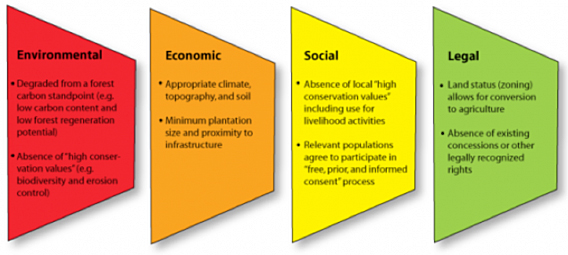
Measurable parameters underlie these screens
One should note that some areas that are acceptable according to environmental, economic, and social criteria may be currently unavailable to planters for legal reasons. For example, some of these degraded areas may not be zoned for agricultural activities. This does not mean, however, that the area should necessarily be removed from consideration, since zoning can be changed.
CHALLENGES CONFRONTING DEGRADED LAND
Often logging a forest is used to pay the ‘down payment’ on starting a plantation. Given this, how would new plantations on degraded land be financed?
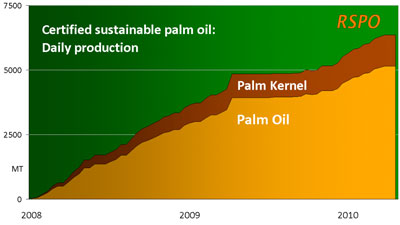
|
This may be true in some cases, particularly when stands of commercial timber-rich forest are granted for palm oil. But times may be changing. In collaboration with the Prince’s Rainforests Project and agricultural economist Thomas Fairhurst, we recently interviewed a number palm oil companies in Indonesia about the value to them of expanding into land with tree cover vs. expanding into areas without trees. Many stated they would rather expand onto non-forested land due to the set-up costs and the lengthy bureaucratic processes of getting a permit in forested areas. None of the companies interviewed cited financing—and thus the need for a timber cut to generate cash—as a factor restricting their expansion. Rather, they emphasized the importance of improved spatial planning as the main requirement to reach oil palm development targets as well as forest conservation goals in Indonesia.
In some places such as Indonesia, degraded land has been claimed by small-scale farmers or local communities. How should landownership be determined in such cases?
In all cases, genuine land use and ownership claims must be respected, including the claims of indigenous peoples. In many cases, such claims are not clearly documented, are overlapping, or are conflicting. Our close partner, Sekala, has shown community mapping to be an effective and conflict-reducing way of agreeing and documenting land ownership and use claims – both within a community, and between a community and government or land-using industry.
If communities are to be compensated for providing degraded land to companies, who will pay them?
Of primary importance is ensuring a fair decision making process. The approach of Free, Prior and Informed Consent (FPIC) has been designed to help ensure that communities are not forced into relinquishing land against their will, and that they are appropriately compensated for any land based values or use rights they do choose to relinquish.
LAND SWAPS
How would land swaps work?
One approach for reducing deforestation and peatland degradation in Indonesia that WRI has been working on is to divert planned oil palm plantations away from natural forests and toward degraded lands instead. We sometimes refer to this as a “land swap”. Under a swap, a company that has a permit to clear a tract of natural forest and convert it into an oil palm plantation does not “exercise” that permit but rather develops the plantation on a roughly equivalent-sized tract of degraded land, such as an alang-alang grassland (Imperata cylindrica). Under our model, plantation development in the degraded area follows the procedures of the RSPO (Roundtable on Sustainable Palm Oil), including obtaining the free, prior, and informed consent of communities living near the degraded area. Likewise, a sustainable forest management or conservation plan is put in place for the forest previously slated for conversion. Ecosystem restoration concessions (ERCs) are one mechanism for pursuing the latter. Under an ERC, the government grants the permit holder long term rights to sell ecosystem services produced by the land in return for the obligation to manage the land for ecosystem conservation or restoration with only limited extraction.
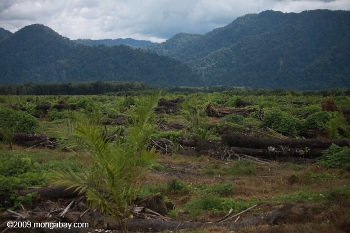 Beginning of the palm oil plantation in the foreground in Sumatra, Indonesia, forested hills in the back. Photo by: Rhett A. Butler. |
Land swaps are part of a broader strategy of utilizing degraded land for plantation development as a means of relieving agricultural pressure on natural forests. In essence, land swaps are an approach for undoing the mistakes of the past—that is, permits or concessions that were allocated on natural forests or peat lands. But only allocating oil palm plantation permits on degraded lands going forward—a strategy supported by Indonesia’s president—would prevent mistakes in the future.
In short, degraded land utilization could allow a country to have its palm oil and its forests, too.
You have written that for degraded land to be used for agriculture it should be “physically suitable, economically viable, legally available, and socially acceptable to nearby communities”. How much land do you think actually fits all of these requirements?
Based on field surveys in just one portion of Borneo, we believe that there is a lot of such land, enough to help relieve some of the pressure agriculture has on natural forests. But “how much degraded land is there?” is less important than “where are these areas?” Answering the former is helpful for headlines; answering the latter is required for land-use decisions. Our methodology is aimed at figuring the latter out. The important thing now is to apply this methodology at national, provincial and district levels, developing maps of where environmentally sustainable agricultural expansion could potentially occur.
Related articles
Will Indonesia’s big REDD rainforest deal work?
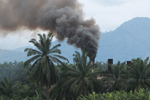
(12/28/2010) Flying in a plane over the Indonesian half of the island of New Guinea, rainforest stretches like a sea of green, broken only by rugged mountain ranges and winding rivers. The broccoli-like canopy shows little sign of human influence. But as you near Jayapura, the provincial capital of Papua, the tree cover becomes patchier—a sign of logging—and red scars from mining appear before giving way to the monotonous dark green of oil palm plantations and finally grasslands and urban areas. The scene is not unique to Indonesian New Guinea; it has been repeated across the world’s largest archipelago for decades, partly a consequence of agricultural expansion by small farmers, but increasingly a product of extractive industries, especially the logging, plantation, and mining sectors. Papua, in fact, is Indonesia’s last frontier and therefore represents two diverging options for the country’s development path: continued deforestation and degradation of forests under a business-as-usual approach or a shift toward a fundamentally different and unproven model based on greater transparency and careful stewardship of its forest resources.
RSPO to recognize secondary forests as conservation priority
(11/12/2010) The Roundtable on Sustainable Palm Oil (RSPO), a body that sets environmental standards for palm oil production, has passed a resolution to reconfirm that secondary and degraded forests can classified as High Conservation Value (HCV) areas. The designation could increase the area of forest conserved within oil palm plantations provided it has high conservation significance, such as serving as habitat for endangered species like orangutans, Sumatran tigers, and rhinos.
U.S. companies should help drive push toward sustainable palm oil
(11/09/2010) U.S. companies should take a leadership role in helping ensure that palm oil production is sustainable and does not come at the cost of forests, climate, and communities, argues a new report published ahead of the annual meeting of the Roundtable on Sustainable Palm Oil (RSPO). The report, published by the National Wildlife Federation (NWF), says that while the U.S. is only a minor consumer of palm oil, its demand for the vegetable oil is fast rising, increasing four-fold since 2006. Palm oil, which is among the cheapest of vegetables owing to its high yield, is now found in up to 50 percent of packaged retail food products.
Misleading claims from a palm oil lobbyist
(10/23/2010) In an editorial published October 9th in the New Straits Times (“Why does World Bank hate palm oil?”), Alan Oxley, a former Australian diplomat who now serves as a lobbyist for logging and plantation companies, makes erroneous claims in his case against the World Bank and the International Finance Corp (IFC) for establishing stronger social and environmental criteria for lending to palm oil companies. It is important to put Mr. Oxley’s editorial in the context of his broader efforts to reduce protections for rural communities and the environment.
Corporations, conservation, and the green movement
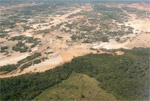
(10/21/2010) The image of rainforests being torn down by giant bulldozers, felled by chainsaw-wielding loggers, and torched by large-scale developers has never been more poignant. Corporations have today replaced small-scale farmers as the prime drivers of deforestation, a shift that has critical implications for conservation. Until recently deforestation has been driven mostly by poverty—poor people in developing countries clearing forests or depleting other natural resources as they struggle to feed their families. Government policies in the ’60s, ’70s, and ’80s had a multiplier effect, subsidizing agricultural expansion through low-interest loans, infrastructure projects, and ambitious colonization schemes, especially in the Amazon and Indonesia. But over the past two decades, this has changed in many countries due to rural depopulation, a decline in state-sponsored development projects, the rise of globalized financial markets, and a worldwide commodity boom. Deforestation, overfishing, and other forms of environmental degradation are now primarily the result of corporations feeding demand from international consumers. While industrial actors exploit resources more efficiently and cause widespread environmental damage, they also are more sensitive to pressure from consumers and environmental groups. Thus in recent years, it has become easier—and more ethical—for green groups to go after corporations than after poor farmers.
80% of tropical agricultural expansion between 1980-2000 came at expense of forests

(09/02/2010) More than 80 percent of agricultural expansion in the tropics between 1980 and 2000 came at the expense of forests, reports research published last week in the early online edition of the Proceedings of the National Academy of Sciences (PNAS). The study, based on analysis satellite images collected by the United Nations Food and Agricultural Organization (FAO) and led by Holly Gibbs of Stanford University, found that 55 percent of new agricultural land came at the expense of intact forests, while 28 percent came from disturbed forests. Another six percent came from shrub lands.
Rapid growth of palm oil industry tramples indigenous peoples’ rights, says report
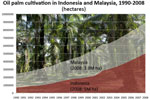
(08/30/2010) Rapid expansion of oil palm plantations across Southeast Asia have run roughshod over customary tenure systems, resulting in exploitation of local communities, conflict, and outright human rights abuses, reports a new assessment of the palm oil sector by the Forest Peoples Programme (FPP), an international indigenous rights group.
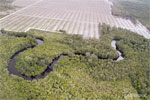
(08/19/2010) Sinar Mas, an Indonesian conglomerate whose holdings include Asia Pulp and Paper, a paper products brand, and PT Smart, a palm oil producer, was sharply rebuked Wednesday over a recent report where it claimed not to have engaged in destruction of forests and peatlands. At least one of its companies, Golden Agri Resources, may now face an investigation for deliberately misleading shareholders in its corporate filings.

(07/29/2010) Many of the environmental issues facing Indonesia are embodied in the plight of the orangutan, the red ape that inhabits the islands of Borneo and Sumatra. Orangutan populations have plummeted over the past century, a result of hunting, habitat loss, the pet trade, and human-ape conflict. Accordingly, governments, charities, and concerned individuals have ploughed tens of millions of dollars into orangutan conservation, but have little to show in terms of slowing or reversing the decline. The same can be said about forest conservation in Indonesia: while massive amounts of money have been put toward protecting and sustainable using forests, the sum is dwarfed by the returns from converting forests into timber, rice, paper, and palm oil. So orangutans—and forests—continue to lose out to economic development, at least as conventionally pursued. Poor governance means that even when well-intentioned measures are in place, they are often undermined by corruption, apathy, or poorly-designed policies. So is there a future for Indonesia’s red apes and their forest home? Erik Meijaard, an ecologist who has worked in Indonesia since 1993 and is considered a world authority on orangutan populations, is cautiously optimistic, although he sees no ‘silver bullet’ solutions.
Indonesia’s plan to save its rainforests

(06/14/2010) Late last year Indonesia made global headlines with a bold pledge to reduce deforestation, which claimed nearly 28 million hectares (108,000 square miles) of forest between 1990 and 2005 and is the source of about 80 percent of the country’s greenhouse gas emissions. President Susilo Bambang Yudhoyono said Indonesia would voluntarily cut emissions 26 percent — and up to 41 percent with sufficient international support — from a projected baseline by 2020. Last month, Indonesia began to finally detail its plan, which includes a two-year moratorium on new forestry concession on rainforest lands and peat swamps and will be supported over the next five years by a one billion dollar contribution by Norway, under the Scandinavian nation’s International Climate and Forests Initiative. In an interview with mongabay.com, Agus Purnomo and Yani Saloh of Indonesia’s National Climate Change Council to the President discussed the new forest program and Norway’s billion dollar commitment.
Indonesia announces moratorium on granting new forest concessions

(05/28/2010) With one of the highest rates of deforestation in the world, the world’s third largest greenhouse gas emissions due mostly to forest loss, and with a rich biodiversity that is fighting to survive amid large-scale habitat loss, Indonesia today announced a deal that may be the beginning of stopping forest loss in the Southeast Asian country. Indonesia announced a two year moratorium on granting new concessions of rainforest and peat forest for clearing in Oslo, Norway, however concessions already granted to companies will not be stopped. The announcement came as Indonesia received 1 billion US dollars from Norway to help the country stop deforestation.
Brazil launches major push for sustainable palm oil in the Amazon
(05/07/2010) Brazilian President Lula da Silva on Thursday laid out plans to expand palm oil production in the Amazon while minimizing risk to Earth’s largest rainforest. The plan, called the Program for Sustainable Production of Palm Oil (O Programa de Produção Sustentável de Óleo de Palma), will provide $60 million to promote cultivation of oil palm in abandoned and degraded agricultural areas, including long-ago deforested lands used for sugar cane and pasture. Brazilian officials claim up to 50 million hectares of such land exist in the country.
Nestle’s palm oil debacle highlights current limitations of certification scheme
(03/26/2010) Last week Nestle, the world’s largest food processor, was caught in a firestorm when it attempted to censor a Greenpeace campaign that targeted its use of palm oil sourced from a supplier accused of environmentally-damaging practices. The incident brought the increasingly raucous debate over palm oil into the spotlight and renewed questions over an industry-backed certification scheme that aims to improve the crop’s environmental performance.